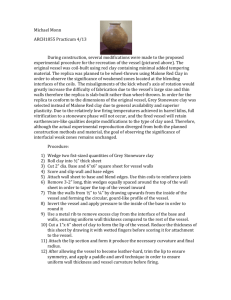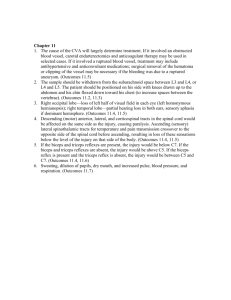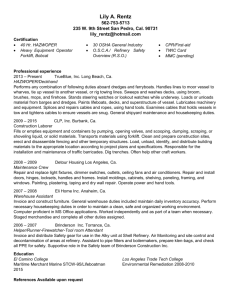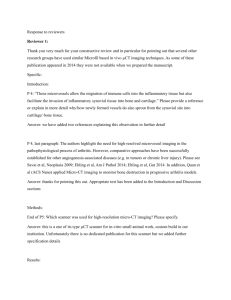Practicum 1_Production Processes
advertisement
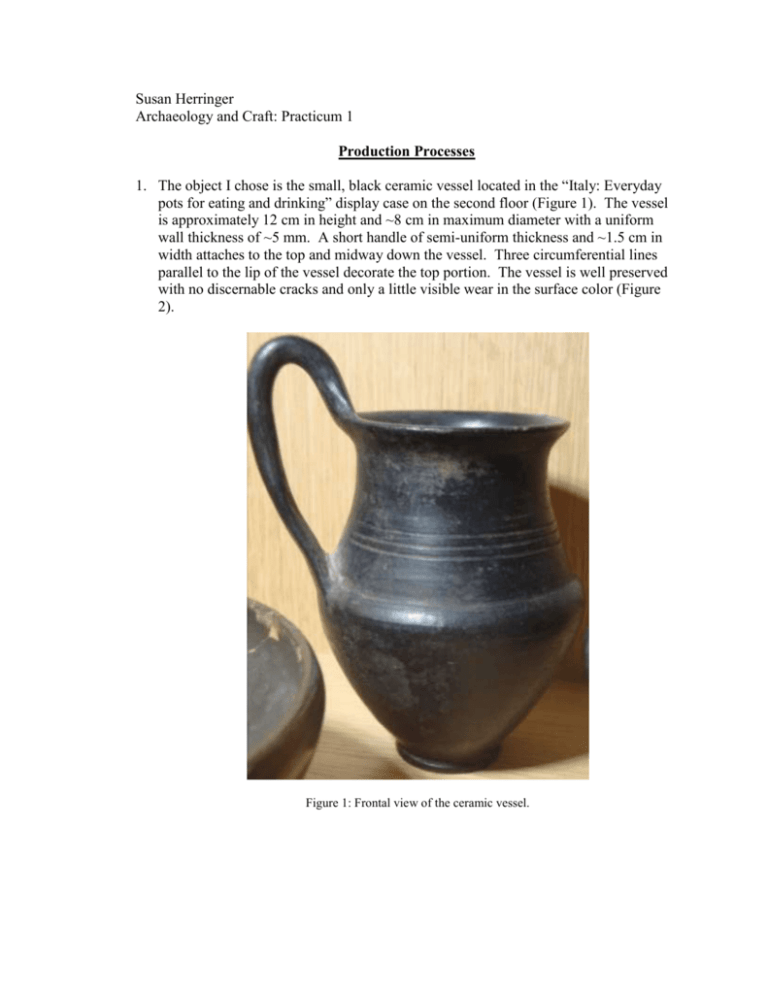
Susan Herringer Archaeology and Craft: Practicum 1 Production Processes 1. The object I chose is the small, black ceramic vessel located in the “Italy: Everyday pots for eating and drinking” display case on the second floor (Figure 1). The vessel is approximately 12 cm in height and ~8 cm in maximum diameter with a uniform wall thickness of ~5 mm. A short handle of semi-uniform thickness and ~1.5 cm in width attaches to the top and midway down the vessel. Three circumferential lines parallel to the lip of the vessel decorate the top portion. The vessel is well preserved with no discernable cracks and only a little visible wear in the surface color (Figure 2). Figure 1: Frontal view of the ceramic vessel. Figure 2: Top view of the ceramic vessel with apparent internal surface wear. 2. The thin, uniform thickness of the vessel as well as the parallel striated pattern on the interior wall indicates a wheel-thrown production. It appears that the base of the vessel was added after the vessel was wheel thrown. The handle is likely to have been hand-crafted. From visual inspection, the method of attaching the handle is not definitive, but it is probable that an opening in the vessel was made to attach the handle to the body. The black color signifies a surface treatment and/or a process of oxidizing and reducing firings. Direct variables in the ceramic production include: clay and temper choice, method of construction, surface treatment, choice of fuel and kiln type, and firing time. Indirect variables include the firing conditions, such as temperature, atmosphere (oxidizing vs. reducing), and heating rates, as well as ceramic composition. 3. The ceramic vessel appears to have been executed successfully with a high degree of radial symmetry (excluding the handle) and uniform wall thickness. There are no visible flaws in its construction. A small discontinuity is present half-way up the vessel, which may indicate that the vessel was constructed in two parts and then joined together as seen in the article K.D. Bouzakis et al.; closer inspection of the vessel is needed to investigate this hypothesis. K.D. Bouzakis et al. used finite element method based calculations to support explanations for the deformation of an ancient ceramic jug; certain pressures applied when attaching extremities such as a handle can cause minute deformations and can be analyzed by FEM calculations. 4. There are numerous scientific methods that may be undertaken in ceramic analysis, where such objectives as classification, the study of pottery technology, and provenance can be explored. The vessel is located in the display case labeled “pots for eating and drinking.” Organic residues (i.e. lipids) may be present on the interior surface of the vessel. The residues can be identified by gas chromatography mass spectroscopy (GC-MS). Surface wear can also provide evidence on ways in which the ceramic was used; closer inspection is needed to identify relevant interior surface wear, but there appears to be loss of the black surface treatment. The wheel thrown construction hypothesis can be tested using Xeroradiography, which with the recorded x-ray image, one can examine “the edges of inclusions, pores, and any joins within the pottery” (Tite, 1999); a wheel thrown ceramic will have elongated inclusions and pores drawn up in a spiral pattern around the vessel. The use of thinsection petrography (may be considered too invasive in this instance) and chemical analysis (i.e. XRF) can identify temper materials and surface treatments, which (with comparison to surrounding geological sources) can provide information on exchange and trade of the materials. The age of the vessel can be tested with thermoluminescence. With SEM one can observe microstructural changes and estimate firing temperatures (Tite and Maniatis, 1975) while the use of magnetic analysis will help deduce firing temperature and atmosphere from the determination of composition and grain size of the iron compounds (Velde, 1999). The study of performance characteristics such as strength, toughness, and density/porosity yields a wealth of information, which may be associated to technological choice and the social aspects related to the vessel. Bouzakis, K. et al. 2010. An Investigation of Ceramic Forming Method Using Reverse Engineering Techniques: The Case of Oinochoai from Dion, Macedonia, Greece. Journal of Archaeological Method and Theory . Tite, M.S. 1999. Pottery Production, Distribution, and Consumption – The Contribution of the Physical Sciences. Journal of Archaeological Method and Theory, 6(3). Tite, M.S. and Maniatis, Y. 1975. Examination of ancient pottery using the scanning electron microscope. Nature, 257. Velde, B. and I. Druc, 1999. Some Current Analysis Methods, Ch. 9 in Archaeological Ceramic Materials, 259294.



